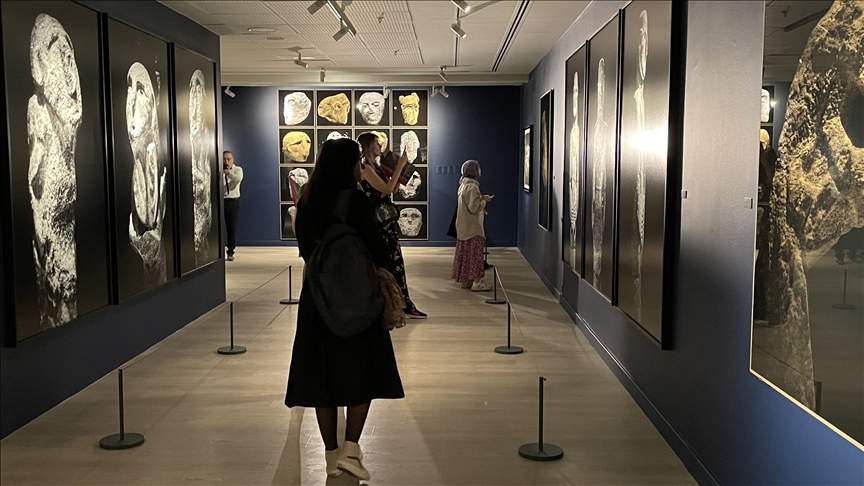ISTANBUL
A new exhibit in Istanbul features the works of acclaimed Spanish photographer Isabel Munoz, who traveled to eastern Türkiye to capture the famed ancient complex of Gobeklitepe, one of the country’s most important archaeological sites, and other nearby early remains.
“Isabel Munoz: A New Story – Photographs From and Around Göbeklitepe,” open through Sept. 17 at the Pera Museum in Beyoglu, Istanbul, was curated by Francois Cheval, director of the French-based Mougins Center of Photography.
Speaking at a press conference at the museum on Wednesday, the 72-year-old photographer explained that her pictures explore Gobeklitepe, as well as nearby Karahantepe, which she described as “very special” for her.
Saying that she sees photography as a way of sharing her knowledge and feelings on these age-old sites with others, the award-winning photographer added that she felt “like a bridge.”
“I was able to work at night because I felt these mixed communal buildings with a spiritual meaning,” she said. “(They) always celebrated things or (were) meeting at night so all this work has been done at night, with no artificial lights, with the torches that the way they used to.”
The exhibit offers the opportunity to explore this mysterious historical region from Munoz’s unique perspective, also offering surprises on new methods and printing techniques employed by the famous photo artist, according to a statement from the organizers.
“Among these innovative works are photographs in which the artist utilizes the ‘Tepetype’ technique for the first time, inspired by the methods used in ancient times, and an extraordinary self-portrait in which she reflects the electrical waves in her brain through EEG to the head figure in Karahantepe.”
Known for her monochromatic portraits depicting people and cultures from various regions, Munoz often visits Türkiye and has worked on local subjects such as whirling dervishes, olive oil workers, oil wrestling, and the Roma community in Sulukule, Istanbul.

‘In Gobeklitepe, I found a spiritual element that spoke to me’
For her Gobeklitepe project, Munoz worked with archaeologists from Türkiye for the first time. “As a photographer, I have a natural curiosity and a desire to explore new things, and even before I had a camera, I was seeking to understand how people in the past lived and felt. In Spain, we have a rich tradition of Paleolithic art, but in Gobeklitepe, I found a spiritual element that spoke to me,” she said, according to a statement from the organizers.
The famed ancient site was discovered in 1963 by researchers from Istanbul and Chicago universities and has been on the UNESCO World Heritage List since 2018.
Gobeklitepe and other sites under the name of Tas Tepeler (Stone Hills) were contemporary to each other. The monumental round-oval and rectangular megalithic structures were erected by hunter-gatherers in the Pre-Pottery Neolithic age between 9,600 and 8,200 BCE, according to UNESCO.
“Distinctive T-shaped pillars are carved with images of wild animals, providing insight into the way of life and beliefs of people living in Upper Mesopotamia about 11,500 years ago,” it added.
The archaeological work she did for this exhibit focusing on Gobeklitepe and its surroundings was a new experience for Munoz.
On her experience taking photos at an archaeological site, she said: “Yes, this time there were no living humans in the photographs, but that was not my focus.”
“I have a passion for archaeology and architecture and have previously done work in these areas. When I visited Türkiye, I was struck by the beauty of your cemeteries, particularly the Ottoman cemeteries, which are incredibly poetic. Although the physical figures are not present, the human element is still there.”
“When I see the beautiful Ottoman stones and read the poems on them, I can imagine physically the women they represent. Similarly, when I photographed Gobeklitepe, I tried to immerse myself in the ancient culture and understand it in my own way.”
“I was inspired by the knowledge of stars that they possessed and made use of their understanding of light to create my images. When I photographed Gobeklitepe and Karahantepe, I saw them as living entities. The anthropomorphic animal figures with human figures underneath added to this sense of life. To me, the stones themselves felt alive.”

